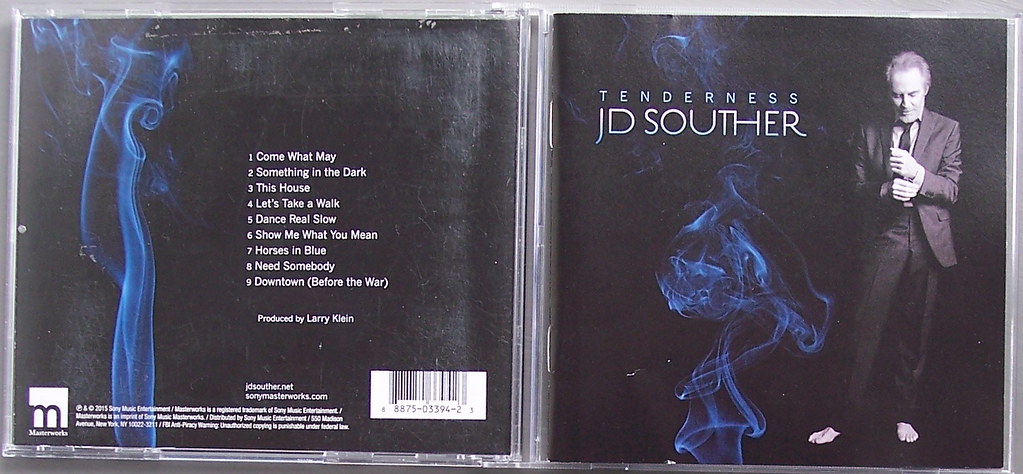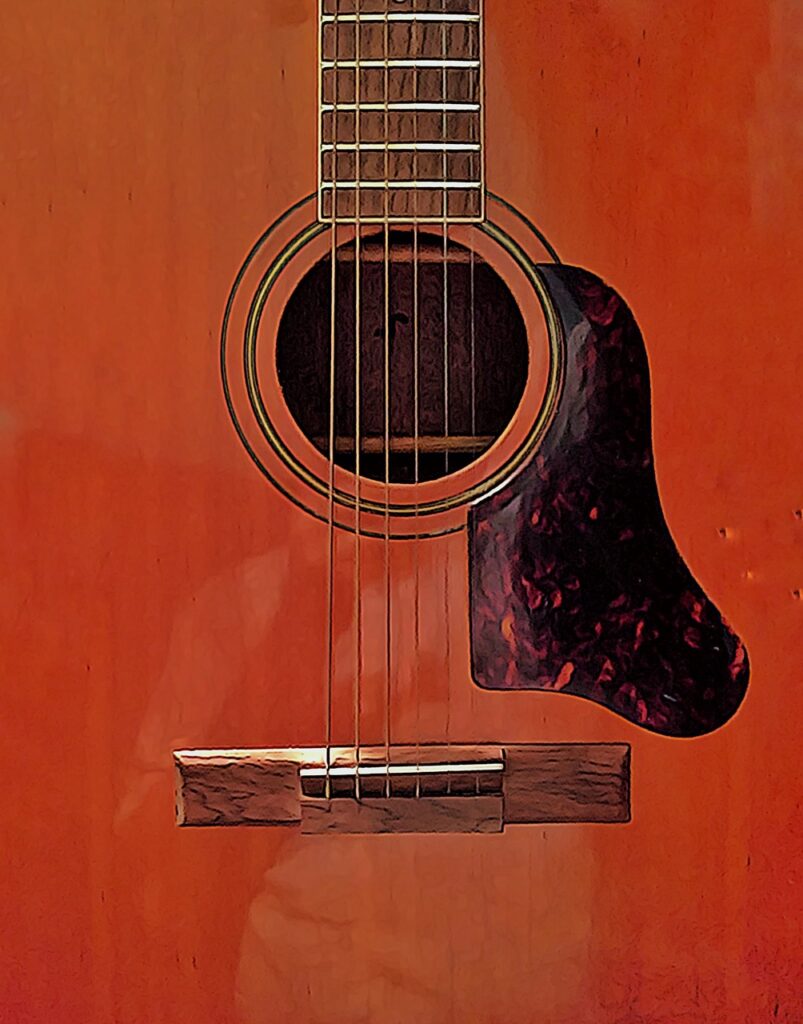
JD Souther, a name synonymous with the profound, melodic heart of 1970s country-rock, departed from us on September 17, 2024, at the age of 78. His peaceful passing at his home in Sandia Park, New Mexico, marked the end of an era, yet it also solidified the timeless legacy of a brilliant songwriter whose work transcended mere music to become an integral part of America’s cultural fabric. For decades, Souther was the quiet architect behind some of the most enduring anthems, a craftsman of heartfelt narratives that spoke to the universal experiences of love, loss, and the bittersweet complexities of human connection.
His impact, though often felt through the voices of others, was undeniable. Souther co-wrote pivotal hits for the Eagles—”New Kid in Town,” “Best of My Love,” and “Heartache Tonight”—songs that didn’t just top charts but became evocative soundtracks to countless lives. He was, as described upon his Songwriters Hall of Fame induction, “a principal architect of the Southern California sound and a major influence on a generation of songwriters.” This article serves as a tribute, a deep dive into the multifaceted life and extraordinary career of a man who kept the folk roots alive within the burgeoning country-rock movement, leaving an indelible mark on music history. We celebrate his artistry, his collaborations, and the quiet genius that defined an entire generation’s sound.
1. **Formative Years: From Detroit to Amarillo, The Roots of a Storyteller**John David Souther’s journey into the world of music began far from the sun-drenched canyons of Southern California, in the industrial heartland of Detroit, Michigan, where he was born on November 2, 1945. Yet, it was in the expansive landscapes of Amarillo, Texas, that his artistic sensibilities truly blossomed. This relocation to Texas, a place steeped in rich storytelling traditions, proved instrumental in shaping the young Souther’s creative spirit. He grew up in a musical family, exposed from an early age to a diverse tapestry of genres that would later inform his eclectic yet cohesive sound.
His father, John Souther, sang in a jazz band and later owned a store selling records and musical instruments, creating an environment where music was not just heard but deeply understood and appreciated. His grandmother, an opera singer, introduced him to the profound emotionality of works like Puccini’s “Nessun Dorma,” which he famously learned as his very first song. This early immersion in various musical forms laid a robust foundation for his future endeavors, instilling in him a profound appreciation for melody, harmony, and lyrical narrative.
Souther’s musical education was hands-on and diverse, spanning multiple instruments. He initially learned the violin, then transitioned to the clarinet and saxophone, before finally embracing the guitar – the instrument that would become synonymous with his songwriting. These formative years, spent absorbing and experimenting with sound, were crucial. They cultivated a deep-seated love for music that would eventually lead him to drop out of Amarillo College to pursue his passion, playing drums with his first band, The Cinders, and making his first recordings in Clovis, New Mexico, in 1965.

2. **West Coast Calling: The Move to LA and the Emergence of Longbranch Pennywhistle**The late 1960s marked a pivotal turning point for JD Souther, as he made the decisive move to Los Angeles in 1969. This wasn’t merely a change of scenery; it was a strategic immersion into a vibrant, burgeoning musical epicenter that was attracting talent from across the nation. Los Angeles, at that time, was a melting pot of creativity, a place where aspiring musicians and songwriters converged, eager to forge new sounds and collaborations. It was in this dynamic environment that Souther would begin to cultivate the relationships that would define his legendary career.
Almost immediately upon his arrival, a serendipitous connection was made with another aspiring musician and songwriter, Glenn Frey. The two quickly formed a close friendship, becoming roommates and, more importantly, musical collaborators. Their shared passion for folk and rock music led them to form a folk-rock duo, which they aptly named Longbranch Pennywhistle. This partnership, though relatively short-lived, was instrumental in developing Souther’s songwriting and performance skills, offering a crucial proving ground for his developing artistry.
Longbranch Pennywhistle released their self-titled album in 1970 on Jimmy Bowen’s Amos Records. While the album itself didn’t achieve significant commercial success, it showcased the duo’s remarkable harmonies and potent songwriting abilities. The blend of poignant lyrics and melodic structures found on this debut offered a clear glimpse into the musical prowess that Souther would unleash fully in the subsequent decade. This early experience was foundational, allowing him to refine his craft and establish a presence within the vibrant Los Angeles music scene, mingling with other up-and-coming artists and laying the groundwork for his future, immensely successful collaborations.
3. **The Eagles’ Architect: Souther’s Pivotal Role in the Band’s Formation**Beyond his own musical projects, JD Souther played an often-understated, yet utterly crucial, role in the formation of one of music history’s most iconic bands: The Eagles. The genesis of this supergroup can be traced directly back to Souther’s personal and professional circles in Los Angeles. At the time, Souther was dating Linda Ronstadt, a rising star in her own right, who was in need of a backing band for her live performances. It was through this connection that Souther, perhaps unintentionally, orchestrated a confluence of talent that would change the course of rock music.
Souther himself recalled the sequence of events with a certain casualness that belied its monumental impact: “My girlfriend then was Linda Ronstadt,” Souther stated to Songwriter Universe. “She needed a band on the road—Glenn and Don backed her up, and that’s when the Eagles were born.” Glenn Frey, Souther’s Longbranch Pennywhistle partner, and Don Henley, who would become the Eagles’ drummer and co-lead vocalist, were enlisted to back Ronstadt. This initial collaboration quickly expanded to include guitarist Bernie Leadon and bassist Randy Meisner, forming the core lineup that would soon branch out on their own as The Eagles.
David Geffen, who signed The Eagles to their first label, Asylum, even “sort of” asked Souther to join the burgeoning group. Souther considered the offer, going so far as to rehearse a set with the band and perform it for Geffen and the Eagles’ managers at the Troubadour. However, in a decision that speaks volumes about his independent spirit and confidence in his own path, Souther ultimately declined. As he recounted to The Times in 2008, it took “all of a minute afterward to say, no, the band was exceptional as it was, and I was quite happy to stay home and write.” This pivotal moment highlights Souther’s unique position: a foundational figure who helped assemble the parts, yet chose to remain an outside, immensely influential collaborator.
4. **A Songwriting Powerhouse: Iconic Collaborations with The Eagles**While JD Souther opted not to officially join The Eagles, his decision allowed him to become an unparalleled songwriting powerhouse for the band, shaping their sound and contributing to some of their most indelible hits. His collaboration with Glenn Frey and Don Henley was a symbiotic relationship, a blend of individual talents that produced magic. Souther’s ability to craft poignant narratives and unforgettable melodies proved invaluable to the Eagles’ ascent, securing his place as a “brilliant collaborator” and “a student of the deep roots of the best American music,” as the band affectionately described him.
He co-wrote several of their most beloved and commercially successful tracks, songs that not only topped charts but also became defining anthems for a generation. “New Kid in Town,” released in 1976, stands as a testament to his knack for blending heartfelt lyrics with catchy, melancholic melodies. This song reached number one on the Billboard Hot 100, marking a significant milestone for both Souther’s and the Eagles’ careers, encapsulating themes of transient fame and inevitable replacement with a lyrical elegance that resonated deeply.
Another iconic track born from Souther’s pen is “Best of My Love,” a tender, harmony-drenched ballad that perfectly captures the bittersweet essence of love and longing. Its success underscored Souther’s talent for distilling complex emotions into universally relatable verses. The Eagles’ final chart-topping song on the Billboard Hot 100, “Heartache Tonight,” released in 1979, was also co-written by Souther, alongside Bob Seger, Glenn Frey, and Don Henley. This track solidified his reputation as an indispensable contributor to the Eagles’ monumental success, demonstrating his versatility across different emotional registers and musical styles. His dedication to pushing his collaborators, evident in his own words — “You want to push the other person to the best thing they’ve got. Because your name is going to be on it, too.” — ensured that every co-written track reached its highest potential.
5. **Crafting Emotions: JD Souther’s Signature Lyrical Style and Thematic Depth**What truly distinguished JD Souther as a songwriter was his exceptional ability to infuse his compositions with universal themes, crafting lyrics that resonated deeply and authentically with listeners across generations. His signature style was characterized by an emotional depth that explored the intricate tapestry of human relationships, often delving into the tender ache of love, the profound sting of loss, and the inherent complexities that define our connections to one another. He possessed a rare gift for making the deeply personal feel universally understood, allowing audiences to connect with his music on a visceral, personal level.
Souther’s lyrical craftsmanship was subtle yet powerful, avoiding overt grandiosity in favor of nuanced storytelling. He excelled at painting vivid emotional landscapes with simple, evocative language, allowing the listener to step directly into the narrative. Whether conveying the wistful introspection of “New Kid in Town” or the yearning sincerity of “Best of My Love,” his words carried an inherent authenticity that spoke volumes. This approach created songs that were not merely catchy tunes but enduring reflections on the human condition, inviting introspection and empathy.
His collaborations, particularly with The Eagles, exemplify this profound ability. Souther’s lyrical contributions to their body of work provided much of its emotional core, establishing a benchmark for reflective country-rock songwriting. He was a master of capturing fleeting moments and enduring sentiments, transforming them into poetic expressions that lingered long after the music faded. This thematic consistency, combined with his melodic genius, ensured that his songs transcended transient trends, cementing their place as timeless pieces of the American musical landscape and making him “a major influence on a generation of songwriters.”
6. **Stepping into the Spotlight: The Beginnings of His Successful Solo Career**While JD Souther’s prolific songwriting for The Eagles and other artists cemented his reputation as a behind-the-scenes genius, he also embarked on a notable solo career that showcased his distinctive voice and unique artistic vision. After establishing himself as a highly sought-after songwriter, Souther stepped into the spotlight, releasing several albums that blended rock, country, and folk influences, all infused with his characteristic lyrical depth and melodic sophistication. This solo endeavor allowed him to fully explore his own musical identity, independent of collaborative dynamics.
His self-titled debut solo album, “JD Souther,” was released in 1972 on David Geffen’s Asylum label. This initial offering featured a collection of tracks that demonstrated his versatility, moving seamlessly between genres while maintaining a cohesive, emotionally resonant sound. Though perhaps not achieving the massive commercial success of the Eagles’ hits he penned, this album was a significant statement, firmly establishing his credentials as a compelling solo artist and giving listeners a direct conduit to his artistry.
The path continued with “Black Rose” in 1976, an album produced by Peter Asher, which many critics and fans consider his finest solo work. This period culminated in his biggest solo success with the 1979 album “You’re Only Lonely.” The title track, “You’re Only Lonely,” became a breakout hit, reaching number 7 on the Billboard Hot 100 and holding the number 1 spot on the Adult Contemporary chart for an impressive five consecutive weeks. This single not only showcased his distinctive, soulful voice but also solidified his place as a successful performer in his own right, proving that his artistic genius extended far beyond the realm of songwriting for others. It was a moment of well-deserved personal triumph, allowing his individual artistry to shine brightly on the national stage.
Continuing our exploration of JD Souther’s rich and varied artistic journey, we now turn to the diverse facets of his career that further cemented his status as a musical icon. Beyond his foundational work with the Eagles and his burgeoning solo success, Souther consistently sought new avenues for expression, whether through collaborative supergroups, impactful duets, surprising forays into acting, or a deeply personal return to his craft after a period of quiet reflection. His career was a testament to an artist constantly evolving, driven by an unwavering passion for storytelling and melody.
Read more about: Beyond the Limelight: Remarkable Child Actors Who Found Stardom in Unforeseen Adult Careers

7. **The Souther-Hillman-Furay Band: A Supergroup’s Brief Encounter**Even as his solo star began to rise, JD Souther’s collaborative spirit led him into another significant, albeit short-lived, musical venture: the Souther-Hillman-Furay Band. Formed in 1972, this supergroup brought together three formidable talents of the burgeoning country-rock scene: Souther, Chris Hillman of The Byrds, and Richie Furay, a founding member of both Buffalo Springfield and Poco. The very idea of such a collective promised a potent blend of folk, rock, and country influences, aiming to create a sound that resonated with the era’s eclectic musical palate.
This formidable trio released two albums on Asylum Records. Their self-titled debut in 1974, *The Souther-Hillman-Furay Band*, reached number 11 on the US charts and achieved Gold status, also charting well in Australia. The follow-up, *Trouble in Paradise*, released in 1975, continued to showcase their harmonies and songwriting prowess. Souther himself contributed songs to these albums, including “Run Like a Thief,” which Bonnie Raitt would later feature on her 1975 album, *Home Plate*, underscoring the quality of the material emerging from this collaboration.
Though the group eventually disbanded, citing a lack of commercial success for their second effort, their existence remains a fascinating chapter in Souther’s story. It highlighted his willingness to experiment with different musical dynamics and affirmed his reputation as a versatile songwriter capable of contributing to various collective visions. The Souther-Hillman-Furay Band, though fleeting, added another layer to his rich tapestry of contributions to the Southern California sound.
8. **Beyond the Eagles: Enduring Collaborations with Linda Ronstadt and James Taylor**While Souther’s songwriting for the Eagles is legendary, his prolific pen and keen melodic sense extended far beyond that seminal band, enriching the catalogues of numerous other iconic artists. His collaborations with Linda Ronstadt stand out as particularly impactful, a testament to a deep personal and professional connection that yielded several enduring hits and showcased his ability to craft songs that perfectly suited her powerful, emotive voice. Their relationship, both personal and musical, was a wellspring of creativity in the 1970s.
Souther wrote and co-wrote several pivotal tracks for Ronstadt’s multi-platinum albums. “Faithless Love” from *Heart Like a Wheel* and “White Rhythm and Blues” on *Living in the USA* are prime examples of his lyrical and melodic contributions, further solidifying her status as a superstar. Their musical partnership also extended to duets, including “If You Have Crying Eyes” from his *Black Rose* album, and later, “Prisoner in Disguise,” “Sometimes You Can’t Win,” and “Hearts Against the Wind,” with the latter featuring prominently in the 1980 film *Urban Cowboy*. These collaborations highlighted their undeniable chemistry and Souther’s versatility.
His songwriting talents also shone brightly alongside another titan of the folk-rock movement, James Taylor. Their collaboration on “Her Town Too,” from Taylor’s platinum-certified *Dad Loves His Work* album, became a significant hit in 1981, reaching number 11 on the Hot 100 and number 5 on the Adult Contemporary chart. This poignant track, which delves into themes of heartbreak and nostalgia, perfectly blended Taylor’s smooth vocals with Souther’s eloquent storytelling, creating a timeless classic that resonates deeply with listeners to this day. It underscored Souther’s knack for transforming complex emotions into universally relatable musical narratives.
Beyond these marquee partnerships, Souther lent his talents to a variety of other artists, showcasing his adaptability as a musician and arranger. He provided backing vocals with Don Henley on Christopher Cross’s debut album, notably on “The Light Is On.” He also contributed to Dan Fogelberg’s work, performing on “False Faces” and “Loose Ends” on the 1976 LP *Nether Lands*, and even as part of the “Hot Damn Brothers” on Fogelberg’s 1975 album *Captured Angel*. His reach extended to international collaborations, providing guest vocals for Clannad’s album *Sirius* in 1987. Furthermore, he co-wrote Don Henley’s 1989 hit song “The Heart of the Matter” with Mike Campbell, proving his continued relevance and creative prowess across decades.
Read more about: JD Souther: Remembering the Master Songwriter Who Shaped ’70s Country-Rock and Beyond
9. **A Multifaceted Artist: Ventures into Acting**In a surprising, yet perhaps inevitable, expansion of his artistic horizons, JD Souther also ventured into the world of acting, demonstrating a versatility that extended beyond the confines of music. His natural charisma and nuanced expressive abilities, so evident in his songwriting, found new outlets on both the small and silver screens. These acting pursuits offered fans a different lens through which to appreciate his multifaceted talent, revealing a performer adept at embodying characters as thoughtfully as he crafted songs.
On television, Souther made notable appearances in popular dramas of the era. He played the character of John Dunaway in the third season of the critically acclaimed series *Thirtysomething* in 1989, immersing himself in the complex narratives of adult life. His talent also found a recurring role in the first season of the country music drama *Nashville*, which premiered in 2012, portraying a grizzled country music fixer with an authentic air. He later reprised this role in a 2017 episode of the fifth season, lending his real-life industry experiences to his on-screen persona and adding a layer of genuine depth to the show’s narrative.
His film career was equally diverse, including appearances in several memorable productions. In 1990, he played Ted in the poignant film *Postcards from the Edge*, directed by Mike Nichols, where he memorably showcased his vocal talent by singing The Platters’ “Smoke Gets in Your Eyes” at a party. He also featured as Jeffrey Pommeroy in the beloved 1994 sequel *My Girl 2* and took on the role of the legendary Jesse James in the 1999 television movie *Purgatory*. Later, in 2012, he appeared in the mystery thriller *Deadline*, further demonstrating his willingness to explore different genres and roles.
Souther’s ability to seamlessly transition between the worlds of music and acting speaks volumes about his dedication to artistic expression. Whether crafting lyrics that resonated deeply or embodying characters with subtle conviction, he approached each endeavor with integrity and passion. These ventures into film and television not only expanded his reach to new audiences but also showcased his inherent charm and natural performing ability, proving that his creative spirit knew no boundaries.
Read more about: Robert Redford’s Love Story: Why His Wife Never Watched His Films & Their Decades of Private Devotion
10. **The Quiet Period and Resurgent Creativity: A Return to the Studio**As the 1980s drew to a close, JD Souther made a conscious decision to step away from the music industry, embarking on a hiatus that would last more than two decades. This period of withdrawal was driven by a desire for a different kind of life, a longing “to build a great house and have a life,” as he articulated. He also expressed a disillusionment with certain aspects of the evolving music landscape, particularly the growing reliance on MTV, noting, “I wasn’t a huge fan of music videos because I thought they encouraged an excess of production as opposed to a real focus on the heart of the music.” This choice reflected his unwavering commitment to the integrity and soul of music.
After his prolonged absence, Souther made a triumphant return to recording in 2008, signaling a creative reawakening that delighted his long-standing fanbase. He famously quipped about his return to *The Times* in 2008: “I probably quit making records because I thought that making records was making me crazy. Turns out I was crazy anyway, so I thought I might as well start making records again.” This witty self-reflection underscored his renewed passion for creating. His comeback album, *If the World Was You*, recorded with a jazz band, marked a significant departure from his country-rock roots and was his first new studio release in nearly 25 years, showcasing his artistic evolution and courage.
This resurgence proved to be more than just a fleeting moment; it ignited a productive new chapter in his career. The fall of 2009 saw the release of *Rain − Live at the Belcourt Theatre*, a follow-up live album that skillfully blended his classic material with his newer jazz-infused explorations. In 2011, he released *Natural History*, an album featuring new versions of his beloved songs that had been recorded by other artists, offering a fresh perspective on his enduring compositions. This prolific period continued with the live EP *Midnight in Tokyo* in 2012 and the studio album *Tenderness* in 2015, each release affirming his continued mastery and artistic vitality.
Beyond his new recordings, Souther also re-engaged with his past, joining the Eagles on their farewell tour in 2008. In a heartfelt gesture of recognition, the band opened their show each night with his 1972 song “How Long,” from the *Long Road Out Of Eden* album, celebrating his foundational role in their history. In his later years, he frequently shared the stage with longtime friend and collaborator Karla Bonoff, enchanting audiences with their musical chemistry and heartfelt performances. These concerts were a testament to his enduring love for connecting with fans, despite facing health challenges in his final years, always reminding everyone of the pure joy that music brings.

11. **Accolades and Recognition: Induction into the Songwriters Hall of Fame**The culmination of a career marked by profound influence and unparalleled craftsmanship arrived in 2013, when JD Souther received one of the most prestigious honors in music: his induction into the Songwriters Hall of Fame. This recognition was not merely an acknowledgment of individual songs but a comprehensive celebration of his entire body of work, encompassing his solo achievements, his legendary collaborations with the Eagles, and his impactful partnerships with countless other artists. It was a moment of profound validation for an artist whose genius often thrived in the background.
Upon his induction, Souther was aptly described as “a principal architect of the Southern California sound and a major influence on a generation of songwriters.” This powerful commendation encapsulated the breadth of his impact, acknowledging his pivotal role in shaping a distinct musical genre and inspiring countless aspiring musicians. It spoke to his innovative blend of folk roots with country-rock sensibilities, forging a sound that became synonymous with an entire era. His ability to craft songs that were both deeply personal and universally resonant truly set him apart.
The induction ceremony itself served as a heartfelt tribute to Souther’s illustrious career, with fellow musicians, friends, and industry luminaries gathering to share stories and memories that painted a vivid picture of his life and contributions. This esteemed recognition not only cemented his legacy within the pantheon of American music but also ensured that his timeless compositions and influential approach to songwriting would continue to inspire future generations. It was a powerful affirmation that his music, indeed, transcends time and trends.

12. **A Man of Simple Pleasures: Personal Life and Passions**Beyond the bright lights of the stage and the quiet intensity of the recording studio, JD Souther was a man of deeply cherished personal passions and a down-to-earth nature that endeared him to those who knew him. Despite the demands of a dynamic career in music, he always carved out time for the simple joys that replenished his spirit and offered a crucial balance to his public life. His personal world was a sanctuary, rich with authentic connections and quiet pursuits.
Souther was known to find immense joy and tranquility in the outdoors. He frequently indulged his love for skiing in the majestic mountains of Aspen, finding exhilaration and peace amidst the natural beauty. Equally important was the time spent on his farm, surrounded by the companionship of his beloved dogs. These moments of connection with nature and animals reflected a humble, grounded spirit, far removed from the celebrity often associated with his musical achievements.
In his personal interactions, Souther was widely recognized for his generosity and kindness. He maintained a strong commitment to nurturing emerging talent, often sharing his vast experiences and invaluable insights with aspiring musicians. His willingness to mentor others and encourage them to pursue their dreams demonstrated a profound dedication to the perpetuation of artistry, reflecting a belief in passing on the torch. He lived a life marked by significant relationships; he married Alexandra Sliwin in 1969, divorcing in 1972, and later dated Linda Ronstadt and Stevie Nicks in the 1970s. He was even the inspiration for Judee Sill’s poignant song “Jesus Was a Cross Maker.” In 2004, he married Sarah Nicholson, with whom he later divorced in 2010.

13. **An Undying Echo: JD Souther’s Enduring Legacy and Peaceful Farewell**The news of JD Souther’s passing on September 17, 2024, at the age of 78, at his home in Sandia Park, New Mexico, marked a somber day for the global music community. His death, confirmed by his representatives, left an undeniable void, silencing one of the most eloquent voices in American songwriting. While the exact cause was not disclosed, his peaceful departure followed a period of declining health in recent years, allowing for a quiet end to a life lived vibrantly through sound and story.
Yet, the echoes of Souther’s profound artistry are far from fading. His legacy lives on, resonating with an undeniable vitality through the timeless songs he so meticulously crafted. Tracks like “New Kid in Town,” “Best of My Love,” and “You’re Only Lonely” are more than just hits; they are emotional touchstones that continue to speak to new generations, reflecting universal truths about love, loss, and the intricate dance of human relationships. His ability to blend heartfelt lyrics with memorable melodies ensured his music became an essential part of the American musical tapestry.
The outpouring of tributes that followed his passing, from fellow musicians, industry luminaries, and countless fans, was a powerful testament to the widespread and deep impact he had. Glenn Frey affectionately called him “a student of the deep roots of the best American music,” while the Eagles described him as “a brother, a friend and a brilliant collaborator.” These heartfelt messages underscored his role not just as a songwriter, but as a mentor, an innovator, and a genuine presence whose influence on contemporary artists is evident in the thoughtful approach to songwriting and storytelling that he championed.
JD Souther’s artistry transcended the fleeting trends of popular music, securing his place as an indispensable architect of the Southern California sound. His gentle genius, marked by a rare emotional depth and an unwavering commitment to craft, has left an indelible impression on the landscape of American music. As we remember him, we celebrate not just the man who penned so many iconic tunes, but the spirit of a true artisan whose songs will continue to stir hearts and inspire minds for generations to come, an undying echo in the grand symphony of life. His was a life beautifully lived, beautifully composed, and beautifully shared.










.jpg)